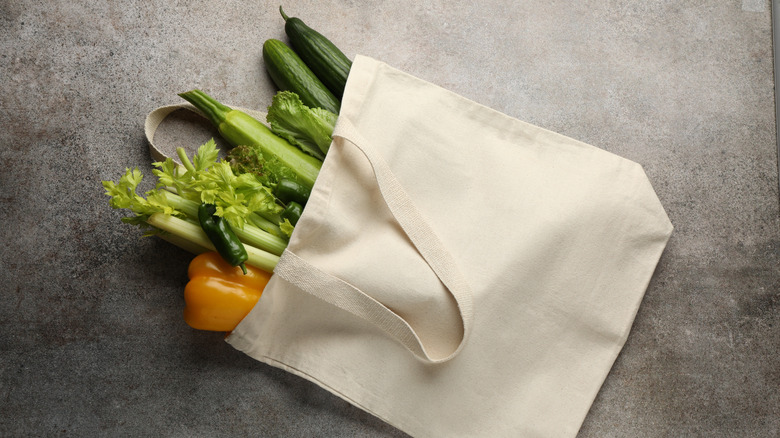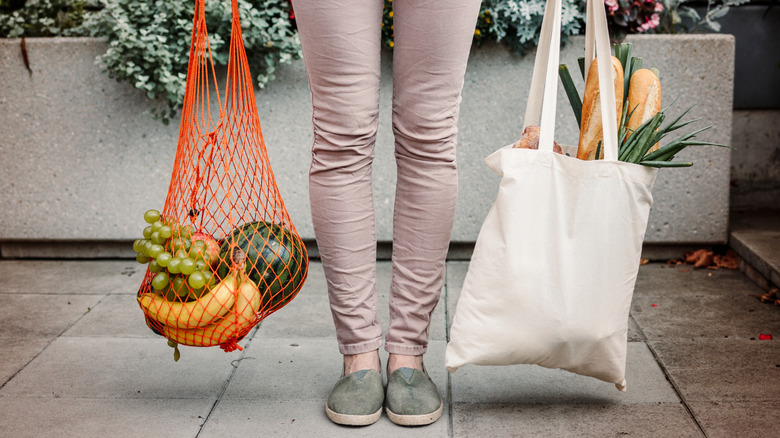The Reusable Grocery Bag Storage Trick That's Like Origami (But For Organization)
Reusable grocery bags are a great choice for both your wallet and the planet, but storing them can be challenging. Maybe you've got a trunk overflowing with crumpled totes or a junk drawer stuffed so full you can barely close it. And when it's time to grab one, you're left digging through the pile, craving a better system. Luckily, there is a simple folding trick that turns that chaos into order with just a few easy steps.
Before you start, keep in mind that this hack works best with certain types of bags. Large reusable trolley bags speed up shopping trips, but their long handles don't fold down neatly, so they're not ideal. Instead, look for standard reusable totes. The kind that are flexible enough to fold but sturdy enough to hold their shape. Gather all of your bags that fit this criteria and get ready to roll!
Lay your bag flat with the handles to the right, then fold the handles over the bag to the left. Take the bottom of the bag and fold it upward so the edge reaches about two-thirds of the way up. Next, fold the top section down to cover it, keeping the left side a little wider than the right. Fold that wider section inward, then curl this tail upward into a circle. Tuck the other tail inside the loop so it's secured. Now, you should have a neatly folded, self-contained bag that's compact, easy to grab, and ready for your next shopping trip.
How to use and care for reusable grocery bags
Aside from storing reusable bags, you also have to care for them. Because these bags get reused over and over, they naturally collect dust, dirt, and bacteria. To prevent contamination, it's a good idea to wash reusable grocery bags after each use and make sure they dry fully before storing them. If you're only carrying dry or packaged goods, you can probably stretch the time between washes, but regular cleaning is still key to keeping your bags safe.
Insulated grocery bags are especially useful for keeping frozen foods, dairy, and meats cold during the trip home. But unlike standard fabric totes, cleaning and caring for insulated bags requires a slightly different approach. Rather than tossing them in the washing machine, give them a thorough wipe down with warm, soapy water as soon as you unpack your groceries. Be sure to clean both the interior lining and the outer surface, then leave the bag open to air-dry completely before storing. This simple routine prevents lingering odors and keeps the insulation working effectively.
Finally, don't overlook how you use your bags. Before heading to the store, review your grocery list to estimate how many and which types of bags you'll need. Try to use the same bags for the specific types of groceries. Use insulated bags for meats and frozen items, a mesh bag for produce, and a tote bag for dry goods. Sticking to this system keeps raw meat separate from fresh vegetables and makes unpacking faster since everything goes straight to its proper spot at home.


